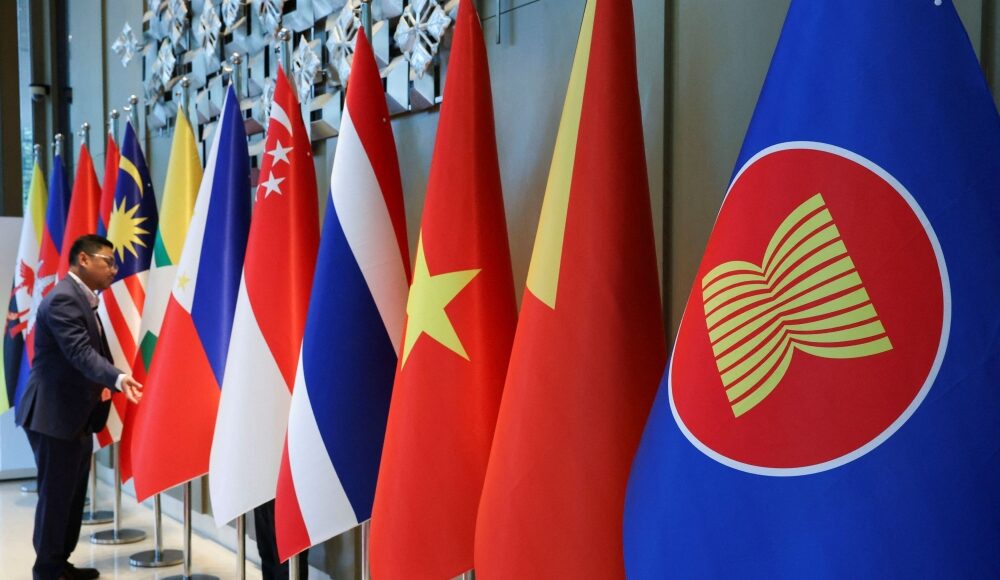MAY 17 — When Malaysia assumes the Asean Chair in 2025, it does so with a unique historical and civilisational compass — one that points not only to the Pacific and Indian Oceans but also to the heart of civilisational dialogues between Islam and Confucianism.
The upcoming Asean-GCC-China Summit, to be held on May 26–27 in Kuala Lumpur, is not just a diplomatic convergence — it is a strategic opportunity to reimagine integration between East and West Asia.
Indeed, rarely in modern diplomacy does a summit represent such a layered confluence of history, culture, religion, and trade.
With the Gulf Cooperation Council (GCC) representing the Arab-Islamic world and Asean reflecting the dynamic economies of Southeast Asia, and with China as the enduring Confucian power, this trilateral engagement provides fertile ground for both strategic connectivity and philosophical synthesis.
Malaysia, grounded in both the Malay-Muslim worldview and the Confucian tradition through its long-standing ties with China, is the most natural bridge.
The upcoming Asean-GCC-China Summit, to be held on May 26–27 in Kuala Lumpur, is not just a diplomatic convergence — it is a strategic opportunity to reimagine integration between East and West Asia. — Reuters pic
Malaysia’s civilisational vantage point
Malaysia is more than just a host — it is the inheritor of two civilisational streams. As a Muslim-majority nation that has practiced open engagement with China for centuries, it is uniquely placed to mediate, synthesise, and propose a deeper regionalism based not solely on economics, but also shared values of order, harmony, and justice.
In the Malay world, Islam was never just a faith — it was a worldview (al-ru’yah al-islamiyyah) based on justice, moderation, and community.
And similarly, the Confucian tradition, as articulated by thinkers like Zhu Xi, enshrined hierarchy not as oppression but as a moral order grounded in virtue.
Together, these civilisational legacies offer the Asean-GCC-China trilateral format a deeper philosophical anchor than the transactional frameworks that plague many modern multilateral arrangements.
Asean and GCC: Strategic convergence, not just convenience
The Gulf states are looking East — and not just to hedge against Western uncertainties. As hydrocarbon economies seek diversification under Saudi Arabia’s Vision 2030, the UAE’s Future Foresight Initiative, and Qatar’s diplomacy of soft power, Asean presents a compelling destination.
With a combined GDP of over US$3.6 trillion (RM15.4 trillion) and a population nearing 700 million, Asean is not just a market — it is a model of developmental pragmatism.
Yet it is China that serves as the third axis in this emerging tri-polar framework. Its Belt and Road Initiative, the Digital Silk Road, and vast infrastructure financing across both Asean and GCC territories position Beijing as the pivotal economic enabler.
However, China’s engagement has often raised concerns about asymmetry. This is where Asean, under Malaysian chairmanship, can mediate—not merely to dilute China’s influence, but to embed it within a rules-based, civilisationally conscious framework.
Zhu Xi and Ibn Khaldun: A dialogue of orders
The strategic logic of this summit is not just geopolitical; it is philosophical. Zhu Xi, the great neo-Confucian scholar of the Song dynasty, emphasised “li”—the principle of universal order.
His writings on harmony, filial piety, and moral governance can find deep resonance in the Islamic concept of ‘adl (justice) and maslahah (public interest), emphasised by Ibn Khaldun.
Ibn Khaldun’s Muqaddimah teaches that civilisations rise and fall based on asabiyyah—social cohesion. This cohesion, he argued, must be rooted in justice and collective purpose, not simply material wealth.
Asean and GCC nations, increasingly buffeted by global disorder, must re-anchor their cooperation in this kind of civilisational cohesion. Trade and infrastructure are important, but enduring integration must emerge from shared moral visions.
From Zhu Xi’s “Great Unity” to Ibn Khaldun’s cycles of civilisation, both traditions caution against imperial overreach, moral decay, and the loss of community values.
As such, Asean and the GCC, guided by the Confucian respect for hierarchy and the Islamic ethos of ethical governance, must design integration that emphasises human dignity over profit, regional sovereignty over coercive alliances, and dialogue over domination.
A new infrastructure of conscience
At a practical level, the Asean-GCC-China Summit should consider the following innovations:
1. Civilisational Dialogue Mechanism: Establish a permanent Asean-GCC Cultural and Civilisational Dialogue Forum, housed in Kuala Lumpur or Doha, with rotating leadership and anchored in comparative philosophy, interfaith dialogue, and values education.
2. Islamic-Confucian Sustainability Framework: Inspired by the Confucian ideal of harmony with nature and Islam’s stewardship concept (khalifah), propose an environmental cooperation platform focused on water, desertification, carbon markets, and halal green industries.
3. Halal-Confucian Trade Corridor: Promote a joint economic zone where halal standards, Confucian business ethics (such as sincerity and accountability), and Islamic finance norms shape trade protocols. This could attract global Muslim and Confucian heritage markets, from Africa to Northeast Asia. After all l, Indonesia and Malaysia have mutually agreed to acknowledge each other’s Halal products.
4. Digital Ethics Compact: Asean, GCC, and China can co-develop an AI and digital technology governance framework that balances innovation with moral safeguards. Drawing from Islamic and Confucian epistemologies, such a framework would emphasise data responsibility, public interest, and algorithmic transparency.
Beyond realism: A value-based regionalism
Too often, summits are reduced to press statements and photo opportunities. Yet regional orders that endure—from the Treaty of Westphalia to the Bandung Conference—were born not of necessity alone, but of vision. Malaysia’s leadership this year must resurrect that spirit.
Thus, the Asean-GCC-China Summit is a chance to move beyond mere hedging strategies between the US and China.
It is a moment to craft a third way—one rooted in the value pluralism of Asia, not its division. Islam and Confucianism, long treated as cultural artifacts, must now inform how we build institutional bridges, not just symbolic ones.
Malaysia, with Prime Minister Anwar Ibrahim’s deep commitment to civilisational dialogue, can lead this synthesis.
As Chair of Asean, it can push beyond trade facilitation toward trade with ethical depth. As a Muslim democracy with historical ties to both Mecca and Beijing, it can propose structures of cooperation that reflect moral clarity in a fragmented world.
Conclusion: A summit of destiny
As wars rage in Gaza and Ukraine, and as sanctions, tariffs, and technology decoupling dominate headlines, Asia’s answer must not merely be alignment — but enlightenment.
The Asean-GCC-China Summit must serve as the Bandung 2.0 — not in rhetoric, but in building an inclusive framework grounded in civilisational ethics.
Let this be the summit where the Gulf and East Asia rediscover one another — not through oil and semiconductors alone, but through the quiet wisdom of Zhu Xi and Ibn Khaldun.
Their ancient insights offer not nostalgia, but navigational beacons. If Asean and the GCC, with China’s engagement, can embody those values, then the 21st century may finally witness a regionalism of conscience — and not just convenience.
Phar Kim Beng, PhD, is Professor of Asean Studies at the International Islamic University Malaysia. He is a Harvard and Cambridge Commonwealth Fellow. He writes frequently on civilisational diplomacy, comparative regionalism, and the philosophical foundations of Asia’s international order.
* Phar Kim Beng, PhD, is a Professor of Asean Studies at the International Islamic University Malaysia and a Visiting Faculty member at the Asia-Europe Institute, University of Malaya.
** This is the personal opinion of the writer or publication and does not necessarily represent the views of Malay Mail.





